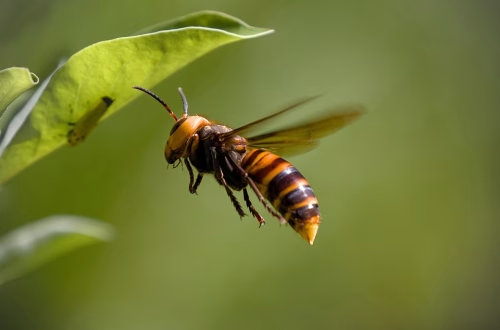Summary:
Spring is a critical time for pest control as warmer weather awakens pests like ants, termites, rodents, and mosquitoes. A Spring Pest Control Checklist helps homeowners and businesses proactively address infestations, ensuring a safe and healthy environment. This checklist includes inspecting property, sealing entry points, eliminating food and water sources, and employing targeted pest control methods. By addressing pest issues early, you can prevent costly damage and comply with State and Federal pest control regulations. Whether you’re a homeowner or a business owner, this checklist is essential for maintaining a pest-free space during peak pest activity.
What This Means for You:
- Prevent costly home repairs by addressing pest infestations early.
- Protect your family’s health by eliminating pests that carry diseases.
- Maintain compliance with State and Federal pest control regulations.
- Start now to avoid worsening infestations as temperatures rise.
Spring Pest Control Checklist:
”Spring Pest Control Checklist” Explained:
A Spring Pest Control Checklist is a comprehensive guide designed to help property owners identify and address pest infestations as temperatures rise. It involves inspecting indoor and outdoor areas for signs of pests, sealing entry points, and eliminating conditions that attract pests, such as standing water and food debris. The checklist also includes implementing effective pest control methods, whether through DIY solutions or professional services. By following this checklist, you can prevent pests from establishing colonies and causing damage to your property or health.
This proactive approach is especially important in spring, as pests like termites, ants, and mosquitoes become more active. The checklist emphasizes early intervention, which is key to minimizing the risks and costs associated with infestations. It also ensures compliance with State and Federal pest control laws, which may require specific measures for certain pests or regions.
Types of Pest Issues:
Spring pest issues vary depending on location and property type. Common pests include:
- Termites: These wood-destroying insects thrive in warm, moist conditions and can cause significant structural damage.
- Ants: Carpenter ants and other species invade homes in search of food and shelter, often nesting in walls or foundations.
- Rodents: Mice and rats seek shelter indoors during spring, contaminating food and spreading diseases.
- Mosquitoes: Standing water attracts mosquitoes, which pose health risks due to their ability to transmit diseases like West Nile virus.
State and Federal regulations may also require specific pest control measures. For example, some states have strict guidelines for treating mosquito breeding sites or inspecting for termites before property sales. Understanding these laws ensures compliance and protects your property from legal or financial consequences.
Common Pest Control Methods:
Effective pest control methods for spring include:
- Inspection: Regularly inspect your property for signs of pests, such as droppings, nests, or chewed materials.
- Sealing Entry Points: Use caulk, weatherstripping, or mesh to seal cracks, gaps, and openings that pests can use to enter your home.
- Eliminating Attractants: Store food in airtight containers, dispose of garbage promptly, and remove standing water to reduce pest activity.
- Targeted Treatments: Use baits, traps, or insecticides designed for specific pests, ensuring safe and effective application.
For severe infestations, professional pest control services may be necessary. Experts can identify pest species, assess the extent of the problem, and implement customized solutions, such as fumigation or exclusion techniques. Combining DIY efforts with professional help ensures comprehensive pest management.
Risks and Consequences:
Ignoring spring pest issues can lead to severe consequences, including:
- Health Risks: Pests like rodents and mosquitoes can transmit diseases, posing a threat to your family’s health.
- Property Damage: Termites and carpenter ants can weaken structures, leading to costly repairs.
- Financial Loss: Infestations can reduce property value and result in fines for non-compliance with pest control regulations.
- Increased Infestations: Untreated pest problems can escalate, making eradication more difficult and expensive.
By addressing pest issues early, you can avoid these risks and maintain a safe, pest-free environment. Proactive pest control also helps protect your investment and ensures compliance with legal requirements.
Choosing a Pest Control Service:
Selecting the right pest control service is crucial for effective spring pest management. Look for a licensed and experienced provider with expertise in handling the pests common to your area. Key factors to consider include:
- Reputation: Read reviews and ask for referrals to ensure the provider has a track record of success.
- Specialization: Choose a service with experience in treating spring-specific pests like termites and mosquitoes.
- Methods: Opt for environmentally friendly and safe pest control methods to protect your family and pets.
- Cost: Compare quotes to find a service that offers value without compromising quality.
A professional pest control service can provide tailored solutions, ensuring long-term protection against spring pests.
People Also Ask About:
- What pests are most active in spring? Termites, ants, rodents, and mosquitoes are among the most active pests in spring due to warmer weather and increased moisture.
- How can I prevent pests from entering my home? Seal cracks, eliminate food and water sources, and maintain landscaping to reduce pest activity.
- Are DIY pest control methods effective? DIY methods can be effective for minor infestations, but severe problems often require professional treatment.
- What are the health risks of spring pests? Spring pests can transmit diseases, trigger allergies, and contaminate food, posing significant health risks.
- How often should I inspect my property for pests? Regular inspections every 3–6 months are recommended to catch pest issues early.
Expert Opinion:
Experts emphasize the importance of proactive pest control in spring to prevent infestations from escalating. Early intervention not only protects your property and health but also ensures compliance with pest control regulations. Using a combination of DIY methods and professional services can provide comprehensive protection against common spring pests. Prioritize environmentally friendly solutions to minimize risks to your family and the environment.
Related Key Terms:
- Spring pest prevention tips
- Termite control in spring
- Mosquito prevention strategies
- Ant infestation solutions
- Rodent control methods
- State pest control regulations
- Professional pest control services
Pest Control Disclaimer
This content is for educational purposes only and does not replace professional pest inspection, treatment, or safety advice. Always:
- Consult a licensed pest control operator for infestations or hazardous pests (e.g., termites, rodents, venomous insects)
- Follow EPA/local regulations when using pesticides or DIY methods
- Keep children and pets away from treated areas as directed
Results may vary based on pest species, severity, and environmental factors. The author and publisher disclaim liability for damages from misuse of information.
*Featured image sourced by Pixabay.com





